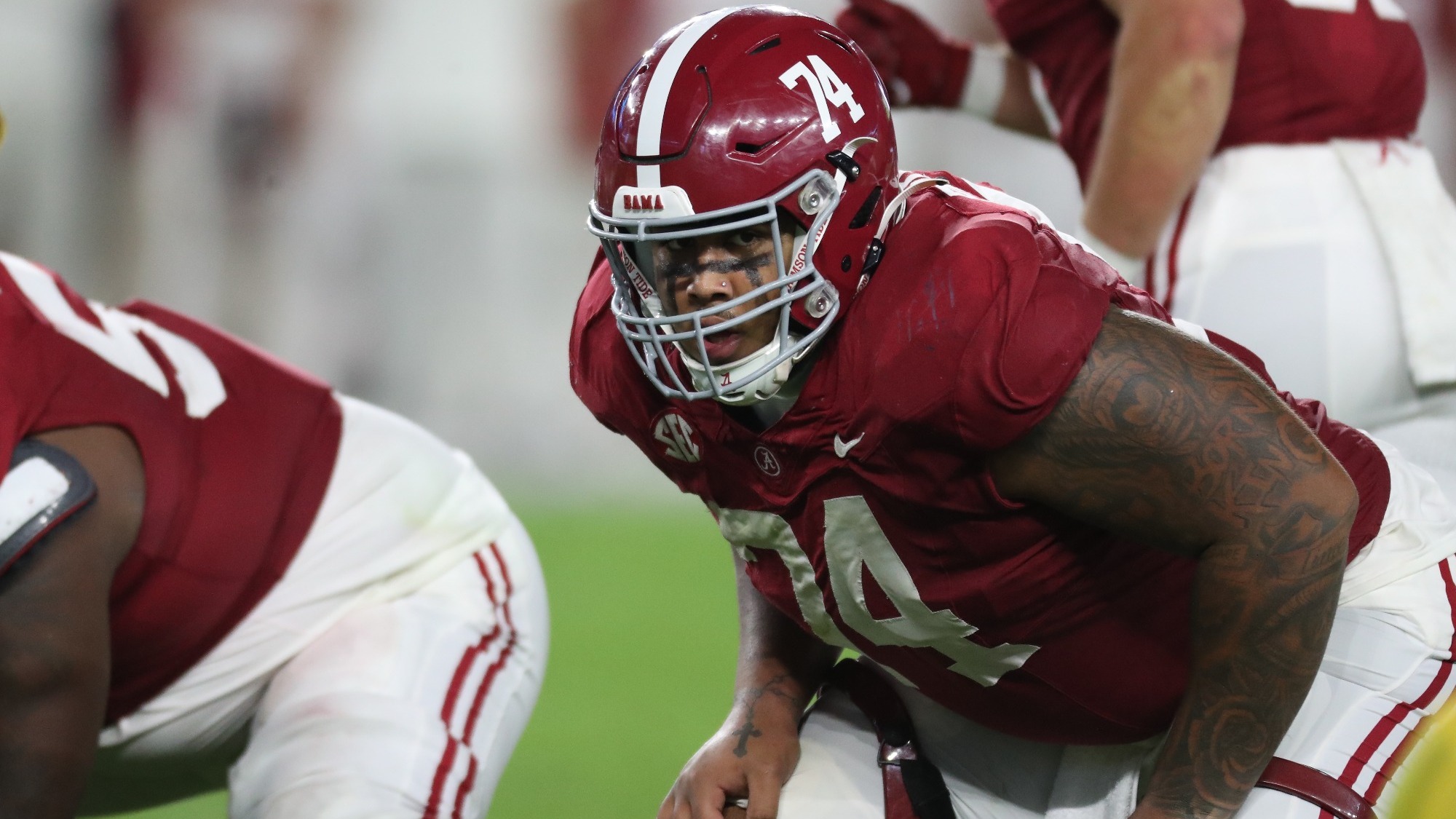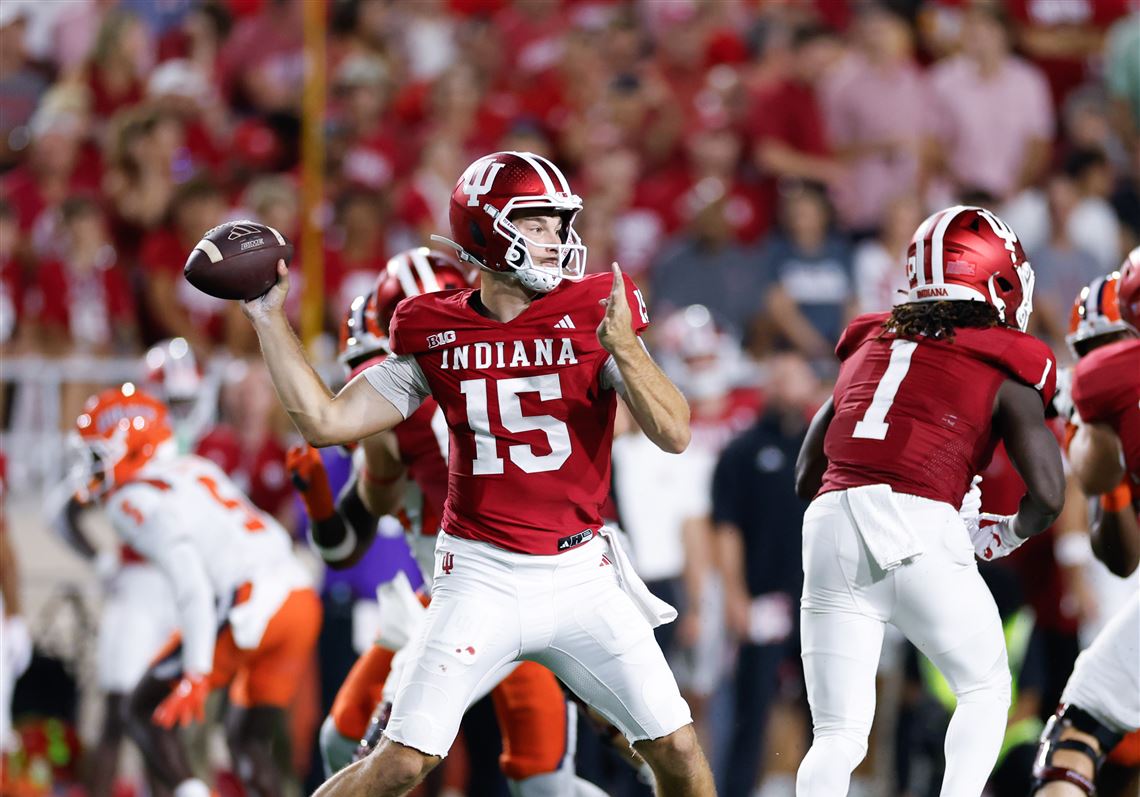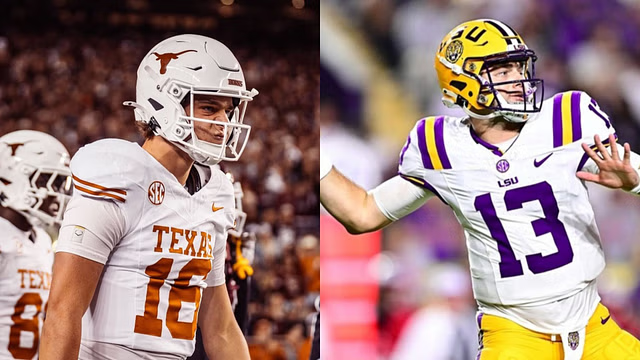By Charlie Campbell.
Send Charlie an e-mail here: [email protected]
Follow Charlie on Twitter @draftcampbell for updates.
This page was last updated March 9, 2018. Follow me @walterfootball for updates.
Position Review: Guards
Guard Class
Early-round talent: A-
Mid-round: C
Late-round: C
Overall grade: B-
2018 prospects vs 2017
Quenton Nelson
Billy Price
Isaiah Wynn
Forrest Lamp
Will Hernandez
Braden Smith
Ethan Pocic
Dion Dawkins
Taylor Moton
Pat Elflein
Frank Ragnow
Dan Feeney
Dorian Johnson
Nico Siragusa
Scott Quessenberry
Will Clapp
Guard was a strong position in the 2015 NFL Draft, and the next two years were rather average. This year, the guard class is top heavy with five players who could be selected over the first two rounds. After that, there isn’t a lot of depth into the mid- or late rounds.
If you were to merge the two classes, Quenton Nelson is hands down the best prospect. He is the best guard prospect this decade. Nelson will, and should, go in the top-10 of the 2018 NFL Draft. Price also could be a first-round pick and is deserving of a Thursday night selection. Wynn is comparable to Lamp as an early second-rounder. Hernandez and Smith are better prospects than Pocic. Dawkins is lower than them as a prospect entering the draft, but he was excellent as a rookie and looks like he could have been undervalued.
Frank Ragnow is a third-round prospect of a similar caliber to Elflein and Feeney. That trio is tough, strong and smart. They won’t ever be “wow” athletes, but they get the job done.
Scott Quessenberry is a little behind the early third-day prospects of Johnson and Siragusa. Clapp would be more of a mid-Day 3 value.
Safest Pick: Quenton Nelson, Notre Dame

This was a no-brainer. Nelson is the most talented and polished offensive lineman in the 2018 NFL Draft class, regardless of position. He also is one of the safest prospects in the draft class. Some team sources think that Nelson could be the best guard in the NFL early in his pro career and could be better than former Patriots All-Pro Logan Mankins. Some have higher grades on Nelson than they did on Mankins, David DeCastro and Brandon Scherff.
Nelson dominated for Notre Dame in 2017, showing the ability to overwhelm defensive linemen as a run blocker and pass protector. After surveying sources from around the league, including multiple general managers, Nelson is a consensus elite prospect for the 2018 NFL Draft. However, he might go behind lesser prospects in the draft just because he is a guard and many teams don’t value guards that high.
Looking back, it is too early to pass any judgement on Tretola. Scherff is a good guard for the Redskins. Su’a-Filo is a starter for the Texans and has been average. Warmack was a bust, so I was wrong about that projection. Lamp missed his rookie year with an injury, so the jury is still out on him.
2017: Forrest Lamp
2016: Sebastian Tretola
2015: Brandon Scherff
2014: Xavier Su’a-Filo
2013: Chance Warmack
Biggest Bust Potential: Scott Quessenberry, UCLA

Quessenberry was a solid center for UCLA, but he wasn’t a nasty blocker at the point of attack. I think he could have issues with NFL defensive linemen pushing him around. NFL speed rushers also will give Quessenberry problems because he isn’t that athletic. He has the size and flexibility to play guard, but his best fit would come as a center.
Elflein had a solid start to his career for Minnesota. I didn’t get this right two years ago as Whitehair had a good rookie year for Chicago, but he was moved to center, which is a better fit for him than guard in the NFL. I was right on Poutasi, who was a bust for Tennessee and didn’t even make it two years with the club after being a third-round pick.
2017: Pat Elflein
2016: Cody Whitehair
2015: Jeremiah Poutasi
2014: Chris Watt
2013: Brian Winters
Guard Rankings by Attributes
Pass Protection:
NFL prototype: Kelechi Osemele, Raiders
- Quenton Nelson
- Billy Price
- Isaiah Wynn
- Will Hernandez
- Braden Smith
- Frank Ragnow
- Will Clapp
- Scott Quessenberry
Recap: The NFL is a passing-driven league, so keeping a clean pocket as a pass-blocker is the attribute that the majority of teams consider first. Coaches want the guards to keep defensive tackles from gaining penetration or causing disruption. If the guards are successful, quarterbacks can step up in the pocket to avoid edge rushers. This helps out the offensive tackles significantly. Additionally, good guard play provides better throwing lanes for the quarterback.
Nelson is dominant in pass protection to the point that he almost never gave up a pressure, much less a sack. He has a very strong base that stands up bull rushes with ease. Nelson also has good athleticism and quick feet to neutralize speed rushers with the length to keep defenders tied up. In the NFL, Nelson should be a real asset to win one-on-one blocks and allow the center to help the other guard with a double team.
Price was a very good as an interior pass protector for Ohio State. He is strong and can anchor against bull rushes with the athleticism to handle speed rushers. Wynn was better in pass protection as a senior at left tackle than he was when he played some guard the previous year. Wynn is quick, agile, and tough to be a reliable pass protector.
Hernandez is capable in pass protection. He is very strong to negate bull rushes, but speed rushers could give him some problems early in his NFL career. Smith is the opposite in that powerful defensive tackles could give him some issues, but he is quick and athletic to block speed rushers.
Ragnow is a smart technician who should be able to pass block effectively pretty quickly in the NFL and handling speed rushers shouldn’t be a huge transition for him.
Clapp and Quessenberry could use work for the NFL. Both could struggle to take on speed rushers at guard and get rolled over by power bull rushers.
Run Blocking:
NFL prototype: Mike Iupati, Cardinals
- Quenton Nelson
- Will Hernandez
- Isaiah Wynn
- Billy Price
- Frank Ragnow
- Braden Smith
- Will Clapp
- Scott Quessenberry
Recap: Guards are the engine of a good running game. They are the most important blockers for opening holes up the middle in addition to pulling or moving on stretch runs. Dominant guards who can open up holes even when defenses know the run is coming provide a mental edge, especially late in games. This is an average class of run blockers.
In the ground game, Nelson is a true road grader. He routinely uses his tremendous size and strength to push defensive linemen out of their gaps. Nelson can blast them off the ball and ride them around the field. Routinely, you would see him drive block a tackle around the field before burying them with a pancake block. While Nelson is not supremely fast, he is quick enough to hit blocks at the second level. In the NFL, Nelson is going to be a load as a run blocker and a real asset in short-yardage or goal-line situations.
As a run blocker, Hernandez has heavy hands with shear power at the point of attack to generate movement. Hernandez can get under defensive tackles’ pads and use his strength to manipulate them out of their gaps. Finding nasty bullies up front is getting more difficult as the up-tempo and spread offenses have changed the game, and Hernandez is a rare college blocker who enters the NFL with a mean streak to set a physical tone at the point of attack. Hernandez blocks through the whistle, pushes defenders around, buries them into the ground, and finishes them off with violence. Hernandez has developed strength to push defenders out of their gaps and open holes in the ground game. Hernandez can sustain his blocks after shocking defenders back. He will quickly be an asset as a run blocker in the NFL.
Wynn has aggression and blocks with a mean streak too. He is a throwback who blocks through the whistle, pushes defenders around, buries them into the ground, and finishes them off with violence. Wynn has developed strength to push defenders out of their gaps and open holes in the ground game. With his heavy hands, Wynn is able to sustain his blocks after shocking defenders back. He also possesses the quickness and athleticism to get to the second level. Wynn can pull and would be a fit for either a zone-blocking or power-man scheme.
Price, Ragnow and Smith are productive in the ground game. Price can push blockers out of their gaps to open holes for his back. Ragnow is a good run blocker who is smart and technically sound. In the NFL, he won’t get movement from the good defensive tackles, but he will be effective against the average defenders. Smith is a big guard with athleticism to get to the second level, but he doesn’t play as strong as his measurements or combine bench press would indicate. Smith could stand to get more physical and nasty at the line.
Clapp and Quessenberry are going to struggle to create any movement in the NFL.
Zone Blocking:
NFL prototype: Josh Sitton, FA
- Isaiah Wynn
- Billy Price
- Braden Smith
- Quenton Nelson
- Frank Ragnow
- Will Hernandez
- Will Clapp
- Scott Quessenberry
Recap: The zone-blocking system is run by a number of NFL teams, and the success of the scheme has many power-man teams adding some zone plays into the playbook. The zone scheme calls for guards to have the ability to move well laterally and downfield to help set up moving walls with cut-back lanes. Guards need the athleticism and quickness in order to be effective.
Wynn would definitely fit well in a zone scheme with the agility, athleticism and speed to move in a zone-blocking scheme. Price is similar with good feet and athleticism that make him a good fit for a zone-blocking scheme as well.
Smith is athletic with length and quickness in the tackle box. He should be an excellent fit in a zone-booking scheme. Nelson can be quick and athletic enough to be part of the moving wall as well. He can do it all and is effective as a zone blocker, although a man scheme is a better fit for him.
Ragnow is able to function in the scheme, displaying the mobility in college to block in zone. Hernandez would fit best in a power-man scheme. Clapp and Quessenberry would fit better in a zone scheme than a man scheme, but both Clapp and Quessenberry could still struggle to be effective in zone schemes.
Power Man:
NFL prototype: Marshall Yanda, Ravens
- Quenton Nelson
- Will Hernandez
- Isaiah Wynn
- Billy Price
- Frank Ragnow
- Braden Smith
- Will Clapp
- Scott Quessenberry
Recap: A lot of teams in the NFL run a power-man-blocking scheme. Guards for this scheme need the ability to defeat their defenders to blast open or seal a running lane. Guards need to have the power to move defenders and sustain blocks.
Nelson and Hernandez are perfect fits for a power-man scheme. They are strong and possess heavy hands to knock defensive tackles off the line of scrimmage and ride them out of their gaps. Both will be real assets as bulldozers at the point of attack to open holes for their backs and get a push in short-yardage situations. With their strong hands and upper bodies, both of these guards are very good at sustaining their blocks and handling their defenders through the whistle. Nelson and Hernandez are tailor made to be power man blockers.
Wynn, Price and Ragnow are all nice fits in a power man. They all have the strength to push defensive linemen at the point of attack. All three are experienced in that style of system and should be able to make the transition smoothly to the next level.
Smith isn’t as strong as some of the other linemen, but he is a good technician in man blocking. He is athletic enough and also can get to spots and hit isolation blocks in space.
Clapp and Quessenberry will struggle to get movement at the point of attack. They would be better off playing in zone schemes.
Versatility:
NFL prototype: Kelechi Osemele, Raiders
- Isaiah Wynn
- Billy Price
- Frank Ragnow
- Will Clapp
- Scott Quessenberry
- Quenton Nelson
- Braden Smith
- Will Hernandez
Recap: A lot of NFL offensive line coaches want to cross-train their interior linemen for another position, especially among the backup offensive linemen. It helps teams in making the decision on who to keep active on game days. Linemen who can play more than one position are highly valued. Coaches like guards who can play center or tackle if there is an injury in the middle of a game.
Wynn played left tackle and guard for Georgia, but sources have told me that he also took snaps at center in practice. Wynn could be a starter at tackle, guard or center in the NFL. He is definitely the most versatile blocker of this group.
Price is sufficiently versatile to play left guard, center, or right guard in the NFL. He could function at one of those three spots well. Ragnow, Clapp and Quessenberry all started at center in college. Ragnow also started at guard, and of his group of three, he is the most capable of being a good starter at center or guard in the NFL.
Some teams might consider playing Nelson at tackle or center in an injury pinch, and they could probably get away with it, but his best fit is at guard. Smith and Hernandez are guards only.
Pulling:
NFL prototype: Zack Martin, Cowboys
- Quenton Nelson
- Isaiah Wynn
- Billy Price
- Will Hernandez
- Braden Smith
- Frank Ragnow
- Will Clapp
- Scott Quessenberry
Recap: Pulling is absolutely necessary for a man-blocking system to work. Zone teams are becoming more diverse and are mixing in more power-man plays that have guards pulling. The quick and athletic guards of zone schemes do better at pulling than isolating and charging straight ahead. Thus, a zone team will like to see a prospect’s ability to pull as well.
Nelson could be dynamite as a pulling guard in the NFL. He is so agile, quick and balanced in his approach. He can dish out perfect blocks in space to open holes and will blast defenders to the turf.
Wynn has the quickness to bend around the line and is athletic to open a hole in space. At Ohio State, Price was effective at pulling. He is agile enough and strong enough to knock back defenders with force.
Hernandez can pull as well, although he isn’t an exceptional athlete. Smith has the skill set to do it, but could use some more strength to pack more of a punch in the NFL. Ragnow also is an effective puller and is adept at getting to his block.
Clapp and Quessenberry could struggle to be productive at opening holes as pulling guards. They aren’t that athletic and don’t pack a punch.
NFL Power Rankings - Dec. 17
2026 NFL Mock Draft - Dec. 17
NFL Picks - Dec. 15
Fantasy Football Rankings - Sept. 1



